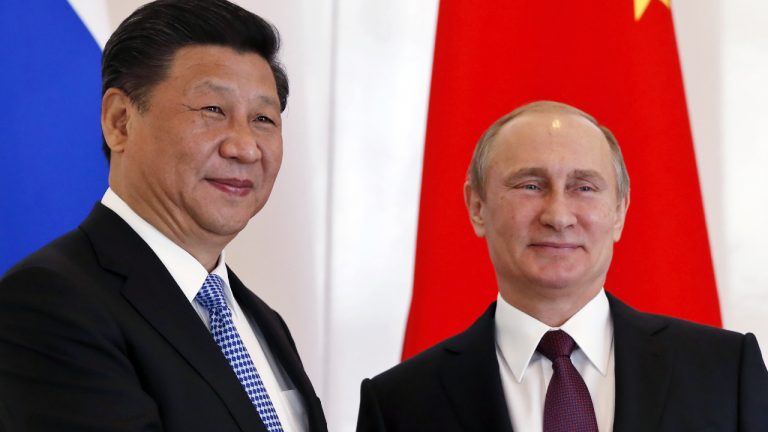China and Russia are collaborating to reduce their dependence on the U.S. dollar. Trade settlements in USD between the two countries have fallen below 50% for the first time.
De-dollarization in Russia and China
The dollar’s share of trade between Russia and China was only 46% of settlements in the first quarter, the Financial Times reported Monday, citing recent data from Russia’s central bank and the Federal Customs Service. This was the first time the use of the U.S. dollar for settlement of trades has fallen below 50%. The euro, on the other hand, represented 30% of all settlements and the national currencies 24% — both are all-time highs.
Since the establishment of the Bretton Woods system, the U.S. dollar has been used as the medium for international trade. However, in recent years, a number of countries, including some G20 countries, have been transitioning to trade in national currencies.
Russia and China have been trying to reduce their U.S. dollar use in trade settlement for several years. In 2015, about 90% of their bilateral transactions were conducted in USD, but that figure dropped to 51% last year, the publication continued.
Alexey Maslov, director of the Institute of Far Eastern Studies at the Russian Academy of Sciences, told the Nikkei Asian Review that the Russia-China “de-dollarisation” was approaching a “breakthrough moment.” He believes that it could elevate the two countries’ relationship to a de facto alliance. “Many expected that this would be a military alliance or a trading alliance,” the director elaborated. “But now the alliance is moving more in the banking and financial direction, and that is what can guarantee independence for both countries.”
ING Bank’s chief economist for Russia, Dmitry Dolgin, was quoted as saying:
Any wire transaction that takes place in the world involving US dollars is at some point cleared through a US bank. That means that the US government can tell that bank to freeze certain transactions.
The Swift system, which has traditionally been used for trade settlement, is overwhelmingly controlled by the U.S., so many countries are trying to construct their own alternative payment systems. For example, China launched a cross-border interbank payment system in 2015.
“Global policies for de-dollarization include sharply reducing US debt holdings, dropping US dollar’s status as an anchor currency, increasing non-dollar bulk commodity trade, growing the reserve of non-dollar currencies, and ramping up gold’s hedge against the dollar,” Wang Wen, a professor and executive dean of the Chongyang Institute for Financial Studies at the Renmin University of China, explained in an article he authored in Global Times.
Zhang Xin, a researcher at the Center for Russian Studies at Shanghai’s East China Normal University, noted that the Chinese government and major economic entities have recently begun to worry that they might end up in a similar situation as their Russian counterparts. They are concerned that they may become “the target” of sanctions and “potentially even getting shut out of the Swift system,” he explained.
Russia has been accumulating renminbi reserves at the expense of the U.S. dollar, the publication conveyed. The Bank of Russia revealed early last year that it had slashed dollar holdings by $101 billion, which amounted to over half of its existing dollar assets. The central bank then raised the renminbi’s share of Russia’s foreign exchange reserve from 5% to 15% by investing $44 billion in China’s currency.
What do you think about Russia and China reducing dollar dependence? Let us know in the comments section below.
The post Russia and China De-dollarization Approaching ‘Breakthrough Moment’ appeared first on Bitcoin News.










